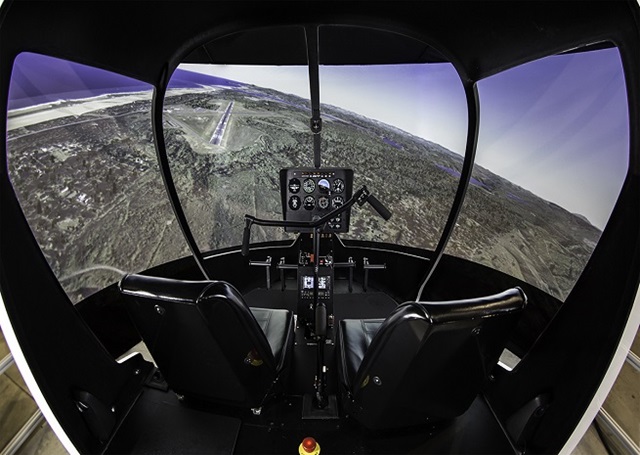Frasca tries to change the culture
New R44 simulator could increase safety record

To many helicopter pilots, the idea of spending time in a simulator is about as foreign as using a runway. That’s what airplane pilots do. Frasca is hoping to change that mindset, starting with a TruFlite training device outfitted as a Robinson R44.
Although simulation has long been in the upper end of the rotorcraft market, smaller operators haven’t had the benefits. Emergency procedures are often practiced low to the ground with a high amount of energy. Simulation can change the safety culture, but only if the devices are good enough to replicate the machine.
As is typical for Frasca, the company decided not to aim low and make a device that met a regulatory minimum. The company outfitted an R44 with data monitoring and flew 40 hours to ensure proper flight modeling. The result is a system that, while stationary, is eerily similar to the real thing. The hardware is real, it responds in a real way, and pilots must treat it as they would treat the helicopter. In practical terms that means a cyclic that can be operated with or without Robinson’s hydraulic assist, a working “governor” that twists the throttle, and failure modes that physically disable controls, such as real stuck pedals.
The wrap-around visual references are also quite lifelike. When the dust rises as you settle down to the landing site, you forget you’re not moving. And try not to lurch forward at the end of a run-on landing when pavement finally grabs the skids for good.
One of the most exciting advancements on the new device is Simassist, a technology simple in concept but no doubt complicated to engineer. The seamless technology is more or less an adaptive stability control system. When students begin training and naturally overcontrol the helicopter Simassist will ramp up stability augmentation automatically. As the simulator senses the student getting a handle on the controls, it will dial down the help. The result is a training experience that allows students to be completely in control from the beginning, with a reference to how well they are progressing. Gone is the constant confusion about who is really flying the aircraft.
Frasca brought the new simulator to Helicopter Association International’s Heli-Expo in Orlando, Florida, with the intent to show what helicopter simulation can do. “This device is an opportunity to offer something that hasn’t been available up to this point,” said Frasca’s Mike Phillips. As a passionate safety advocate, Phillips knows simulation has the ability to change the culture, enabling training that’s simply impossible or impractical in the helicopter. “We don’t have to accept this safety record,” he says. “We have tools to fix this stuff.”



